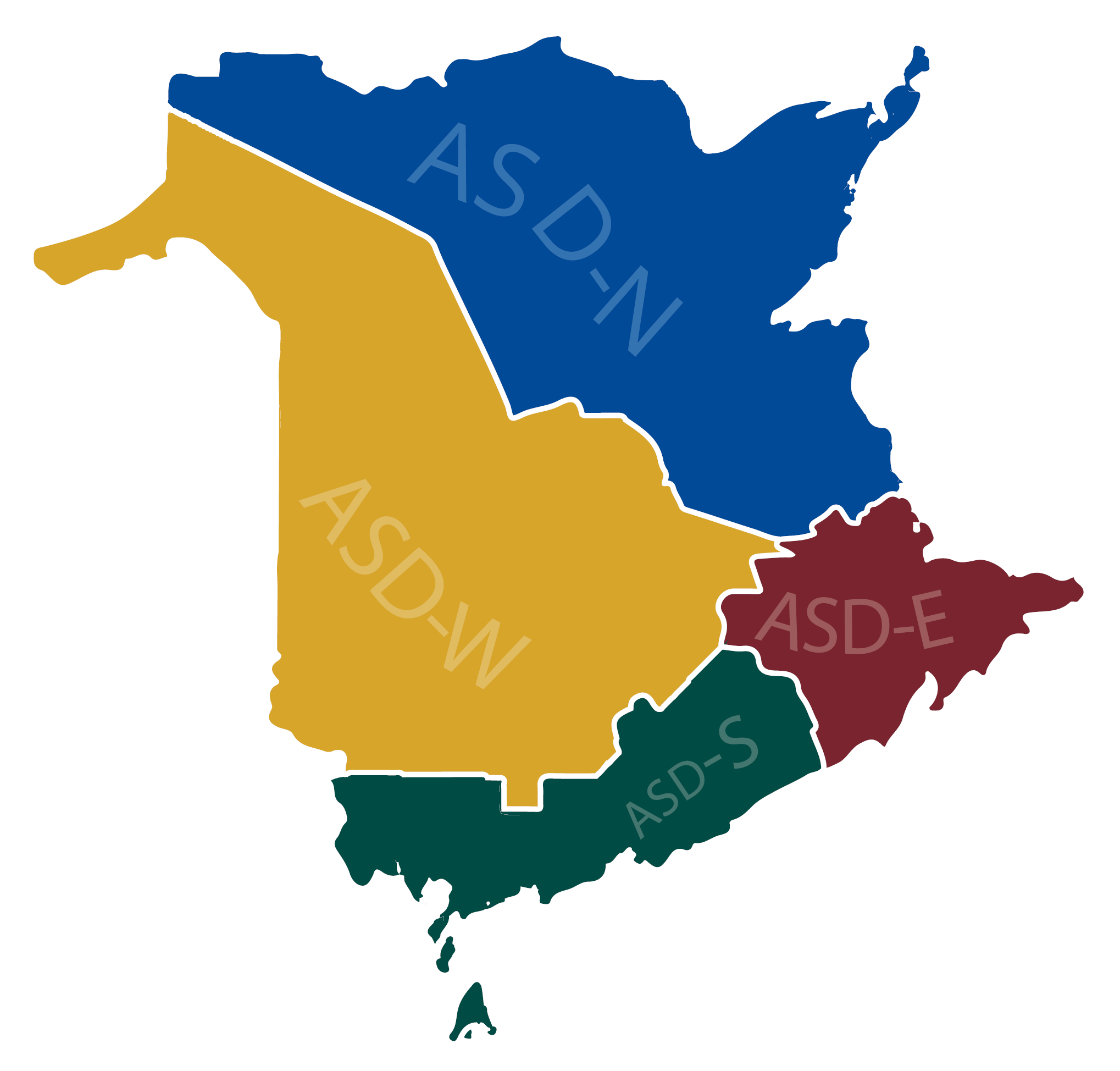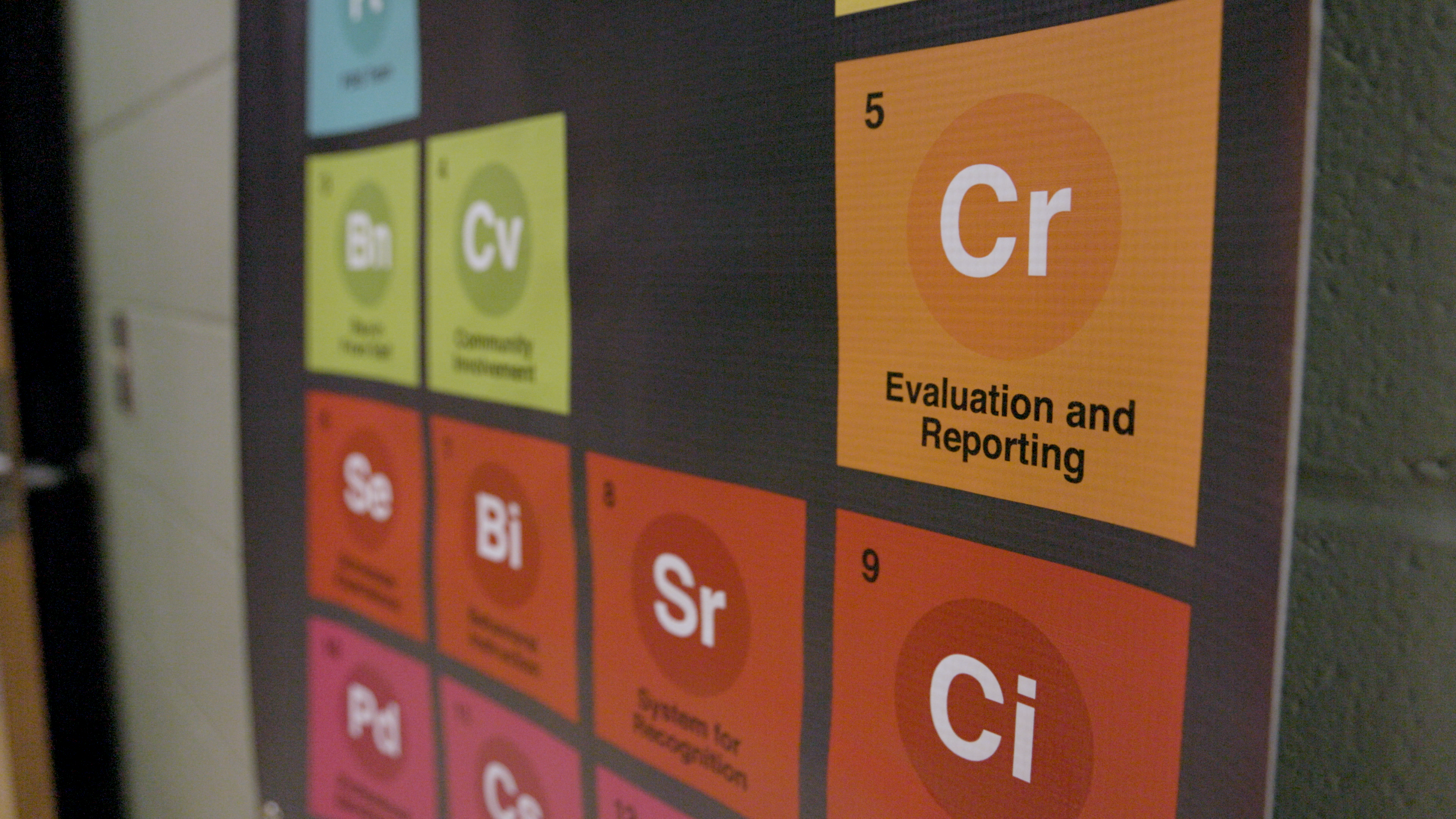
IMPLEMENTING SCHOOL-WIDE PBIS – TIER 1
The following steps are recommended to facilitate the planning process for PBIS initiatives to engage school personnel and to develop plans that are meaningful and relevant. The outcome will be the development of a continuum of PBIS initiatives from a multi-tier perspective. It is expected this will be a multi-year project that will build processes that will develop into day-to-day operations for your school. This continuum will need to be revised as needed based upon progress monitoring data, staff feedback, and lessons learned from implementing PBIS. Tier 1 School-wide PBIS represents the foundation of the framework, and focus on this tier should be given priority until it is well-established within the school.
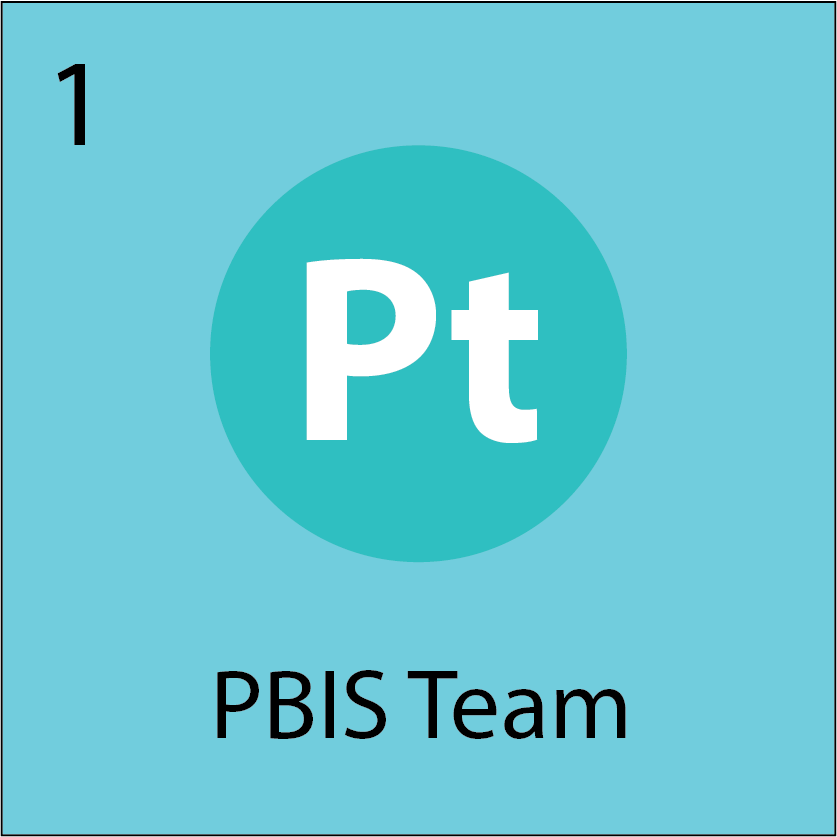
Role of the PBIS Team
The PBIS team plays a crucial role in implementing and sustaining PBIS practices within the school.
The Principal leads the PBIS team: The school’s leadership is actively involved in promoting a positive behaviour support system. The Principal’s support and leadership are essential for the success of PBIS.
Other potential members: The team can include various stakeholders from the school community such as classroom teachers, members of the Education Support Services (ESS) team, Child and Youth (C&Y) team members, English Language Learner (ELL) teachers and even student representatives when appropriate. Involving a diverse group of individuals can provide different perspectives and expertise. Cultural support lead?
Guiding the school community on their PBIS journey: The PBIS team’s primary role is to guide the school community through the process of implementing PBIS practices. This involves training, monitoring, and providing ongoing support to ensure the successful adoption of positive behaviour interventions and supports.
Successful implementation requires the team to:
- Embed the PBIS framework in the school improvement plan.
- Engage the entire school community, including teachers, paraprofessionals, families, bus drivers, custodial staff, professional groups, and community partners.
- Provide professional learning opportunities.
- Recognize staff for their implementation efforts.
- Plan for succession.
- Implement the 12 critical elements of PBIS.
Identifying 3-5 core principles: The PBIS team guides the school community, aiming to identify 3-5 core principles that serve as the foundation of the school’s culture, crucial for fostering a safe and positive learning and working environment. These core principles are strength-based, positively stated, and age-appropriate such as:
- Be Safe, Be Responsible, Be Respectful
- Safe, Kind, and Ready to Learn
- Work with Integrity, Honour Diversity, Include Everyone

Data Collection (Incident Management)
Establishing Your PBIS Baseline
Baseline: Engage staff in reflection and discussion to assess the current practices supporting the school’s Positive Learning Environment within the School Improvement Plan. Review data sources like school reviews, perception data, office discipline referrals, attendance, suspensions, and Power School behaviour incident management.
Current State: School teams develop one-to-three SMART goals to address identified priorities, aligning with the Positive Learning Environment in the School Improvement Plan.
Current Actions: Identify existing practices (e.g., interventions, programs, strategies) at each tier that support the school’s goals.
Monitor Current Practices (Check): Evaluate each practice using the following criteria:
- Evidence-based: Is there evidence supporting the practice’s effectiveness?
- Outcome Data: Is relevant data collected to measure effectiveness?
- Non-Responder Decision Rule: How is the need for tier 2 or 3 intervention determined, and are data-based rules used to modify interventions for non-responding students?
- Implementation Fidelity: Is data collected to ensure accurate practice implementation?
- Effectiveness: Has data demonstrated the practice’s effectiveness in achieving desired outcomes?
Keep or Replace: Based on the evaluation results, decide whether to (a) eliminate, (b) modify and integrate with other practices, or (c) sustain as is or initiate new/different practices.
Continuous Improvement: Display the continuum of positive behaviour supports and interventions.
In the process of reviewing data, the following questions may be considered:
- Are behavioural expectations being met?
- If there are errors:
- who is making them?
- where are the errors occurring?
- what kind of errors are being made?
- Summarize data (look for patterns).
- Use data to make decisions.
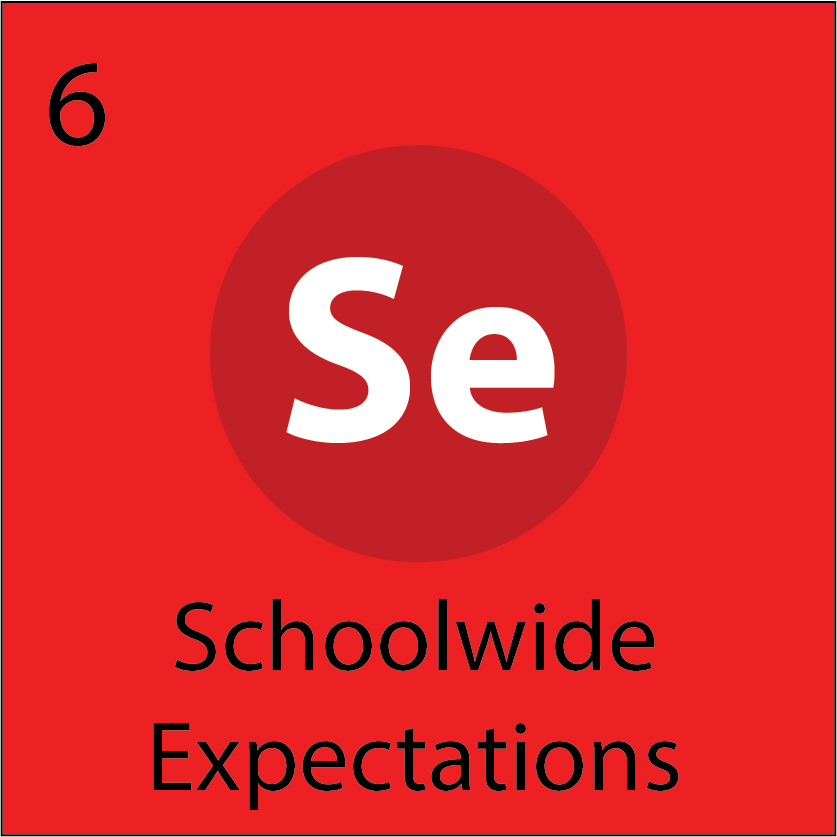
School-Wide Expectations
PBIS Behaviour Matrix
Once teams have selected their core principles, they will use their data to identify areas of growth upon which to build their matrix. The matrix identifies key skills required to demonstrate these principles, what the behaviour expectations look like, and environments where the core principles are evident. The PBIS teaching matrix provides universal means to explicitly teach behavioural expectations and is applied to all community members.
New Brunswick schools are required to provide an inclusive learning and working environment that is based on the foundation of universal design for learning. Therefore, it is paramount that your matrix reflects the diversity of your school community.

Behavioural expectations should be publicly posted within the school, on the school website, in print material and modelled with reinforcement for all. The promotion of expected behaviours is achieved through explicit teaching across all school environments. Consistency from class to class and adult to adult is paramount for successful implementation.

Buy-in From Staff

Professional Development
Getting buy-in from staff for PBIS is crucial for its successful implementation. Building staff buy-in for PBIS is an ongoing process that requires clear communication, collaboration, and a commitment to the program’s success. When staff members see the positive impact of PBIS on learners and the overall school environment, their support for the program is more likely to grow. Here are some strategies to help you gain staff buy-in for PBIS:
Model PBIS Principles: As school leaders, model PBIS principles in your own behaviour and interactions. When staff see administrators and leaders consistently practising PBIS, it sets a positive example for the entire school community.
Clear Communication: Start by clearly communicating the goals, benefits, and objectives of PBIS to all staff members. Ensure that everyone understands how PBIS will enhance the school’s culture and support learner success.
Provide Professional Development & Resources: Offer comprehensive training to staff members to help them understand the PBIS framework, its principles, and how it will be implemented in the school. Training should be ongoing and tailored to the needs of different staff groups such as teachers, support staff, and administrators.
Share New Brunswick Success Stories: Share success stories and examples of how PBIS has worked in other schools or districts. Highlight the positive outcomes such as improved learner behaviour, reduced disciplinary issues, and a more positive school climate. (NB EECD PBIS Flipbook Vol. 1). Share data and evidence that demonstrate the effectiveness of PBIS in improving learner behaviour and academic outcomes. Concrete data can help staff see the tangible benefits of the program.
Involve Staff in Decision-Making: Involve staff in the decision-making process regarding the specific PBIS strategies and practices to be implemented in your school. Encourage them to provide input and suggestions, which can help them feel more invested in the program.
Address Concerns, Feedback and Adapt: Be open to addressing any concerns or questions that staff members may have about PBIS. Provide opportunities for staff to voice their worries and offer solutions or clarification when needed. Encourage staff to provide feedback on the PBIS program’s implementation. Use their input to make adjustments and improvements as needed, demonstrating that their opinions are valued.
Celebrate – Recognize and celebrate small successes and positive changes resulting from PBIS implementation. Acknowledging and rewarding staff efforts can boost morale and motivation.
Be Patient: Recognize that it may take time for staff to fully embrace PBIS. Be patient and persistent in your efforts to build buy-in and continue to provide support and resources as needed.
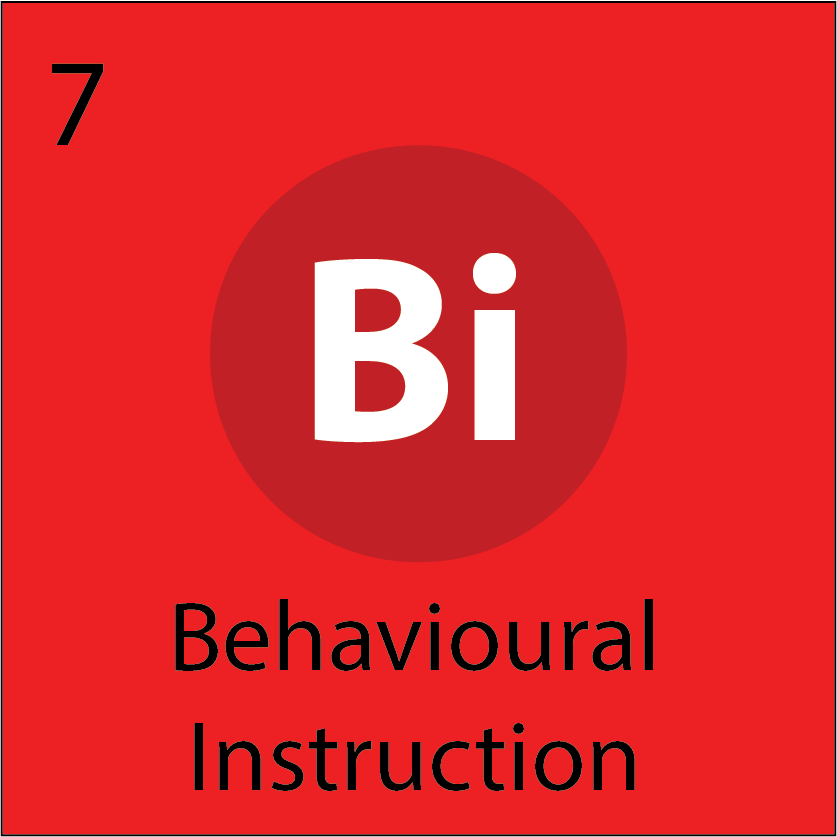
Behavioural Instruction
PBIS involves explicitly teaching and modelling behavioural expectations to all members of the PBIS community. It is important to determine how the behavioural expectations will be taught based on the development and skills of the school community and how this may differ across environments. Schools should use several days at the beginning of each year and/or semester to teach desired behaviours in specific settings. It is important to recognize that new learners, staff, and community partners enter your school throughout the year, so a plan for onboarding will need to be considered.
The essential components for teaching behavioural expectations are:
- Explain the skill and the rationale for the expected behaviour.
- Model the expected behaviour in each context (provide examples and non-examples).
- Practise desired behaviour in role-play and, preferably, in the natural setting.
- Provide specific, positive and corrective feedback (provide greater attention, discussion, comment, etc., for the desired skill rather than errors).
- Monitor and acknowledge consistently expected behaviour (remind learners of the expectation; provide positive feedback when learners are engaging in expected behaviour, and correction as needed).
Each of these components is presented sequentially and within a given lesson in which learners are actively engaged.
Learners should be involved, based on their development, in supporting communication of behavioural expectations (e.g. creation of videos, posters, modelling of expectations for younger learners, support from student council in creation of materials). Teaching should occur as early as possible at the beginning of each school year, and individuals should have opportunities to practise the skill and have it modelled as needed for success. Additionally, behaviour expectations and data needs to be reviewed throughout the school year.
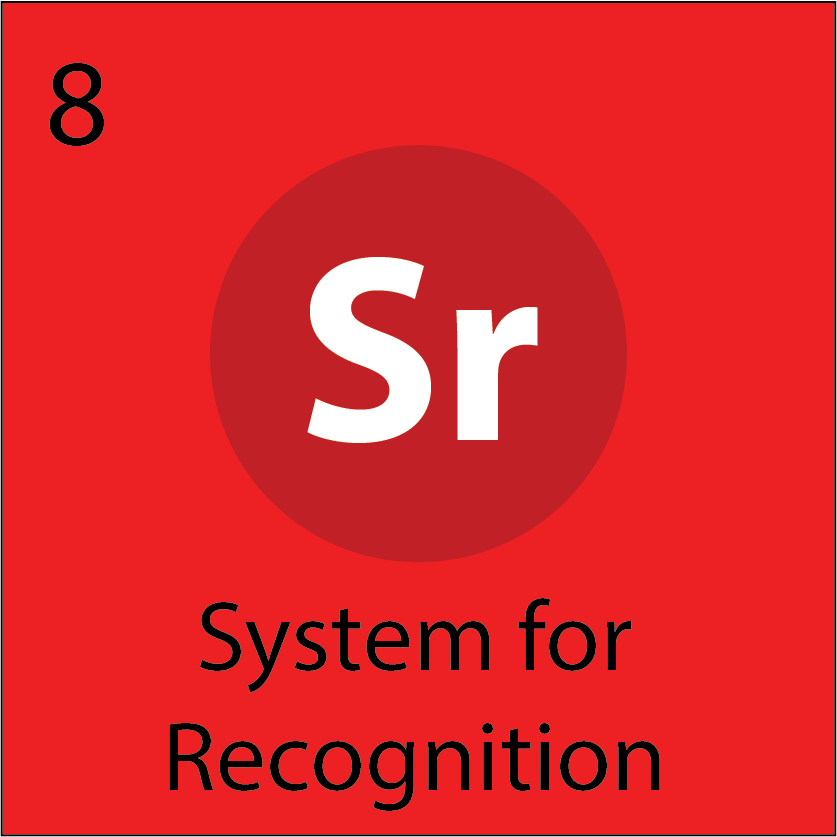
System of Recognition
Once learners have been taught the behavioural expectations, they will need to be acknowledged for demonstrating the desired behaviours. A reinforcement schedule or acknowledgment plan that is co-created will be developed. Within this framework, the type and frequency of rewards that will be provided to learners will be determined. It is beneficial to include learners in the process of determining the incentives available. The reinforcement system may include a variety of incentives. Some schools use tangible reinforcement (e.g., tickets that may be redeemed for prizes), access to privileges or preferred activities (e.g., time to use technology), or social recognition (e.g., positive office referral, leadership opportunity). Regardless of the incentive chosen, the system must be efficient for all staff members to use (i.e. teachers, Behaviour intervention Mentors, educational assistants, administrative assistants, bus drivers, etc.). A periodic evaluation of the efficacy of the reinforcement schedule is required.

Evaluation and Reporting
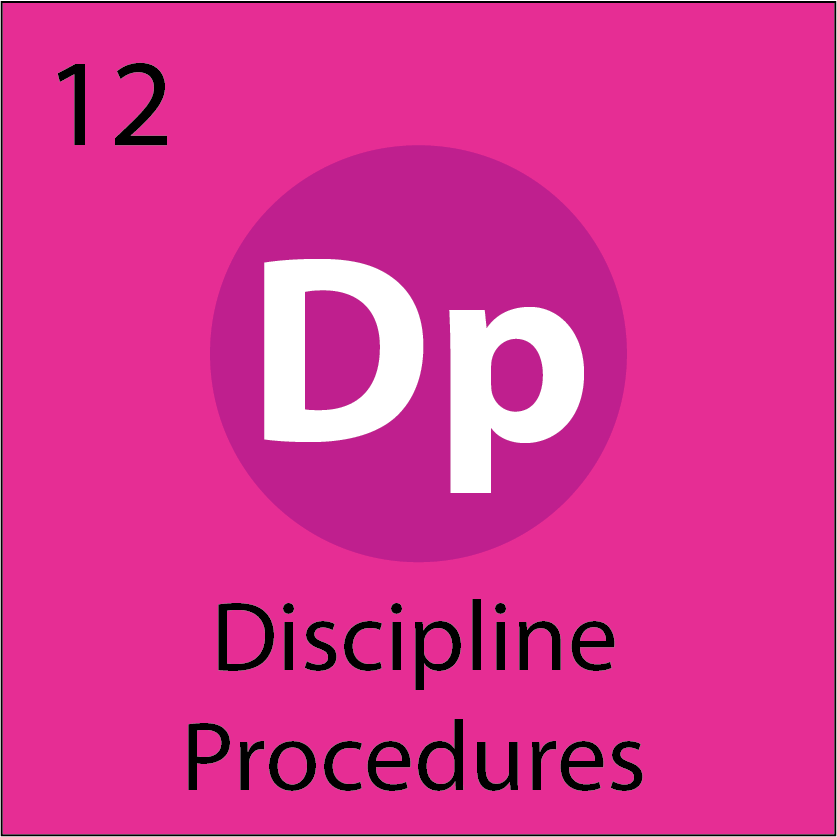
Discipline Procedures
While the majority of learners will respond to the behavioural instruction and acknowledgements provided, some learners will still demonstrate varying degrees of behavioural challenges. Problematic behaviours signal a lack of skill or indicates an unmet need. Individuals need explicit, systematic, and intentional instruction to meet behavioural expectations. Therefore, a system must be put in place that provides individuals with corrective and restorative consequences when they demonstrate behavioural errors. This system must align and respect Policy 322 and Policy 703. Responses may range from minor, such as correction or redirection, to more intense consequences. Consequences should have a restorative component to help students learn to resolve disagreements, take ownership of their behaviour, and engage in acts of empathy and forgiveness.
In addition, the consequence for unmet behavioural expectations will include a teaching component. The teaching component may range from reminding the learner of the behavioural expectation to re-teaching and practising the expected behaviour(s) in the location(s) in the school.
As part of PBIS, it is helpful for a decision tree to be developed reflecting administration and teacher/staff responsibilities when undesired behaviours occur. A system for identifying when and how staff members will document inappropriate behaviours is essential. Tracking behaviour in Incident Management through Power School is required for serious misconduct and behaviours not tolerated as defined in Policy 703. This data will be used by the PBIS leadership team to guide decision-making about program and intervention effectiveness.

Community Involvement
The PBIS leadership team will develop a communication strategy for sharing essential elements of the plan with stakeholders (e.g., students, staff, families, community partners, PSSC). Information should be shared through various platforms such as the student handbook, newsletters, school website, etc. As the communication plan is a living document, it must be reviewed with new learners and staff.

Consistent Implementation
A PBIS initiative is a commitment. You and your staff will be applying the goals and principles of PBIS throughout the school over the course of the entire school year and beyond. This will require succession planning, coaching for staff members who struggle with implementation, community awareness programming, and district support. A cornerstone to support fidelity with regards to consistent implementation is student voice.
Use of the ’12 Elements of PBIS’ graphics and content used with permission from pbisrewards.com

Our PBIS matrix has made a positive difference in our school. Clear and concise expectations for the entire school community have created a more positive working and learning environment, sharing the responsibilities of teaching and celebrating our student behaviours with school and home. PBIS has provided our students and staff with clear and concise expectations and has allowed time for the explicit teaching of the necessary skills. We have seen a decrease in incidents of student behaviour and an increase in teachers’ perception of high behavioural expectations of our students.
Sandra Savard,
Principal, Birchmont School, New Brunswick, Canada
